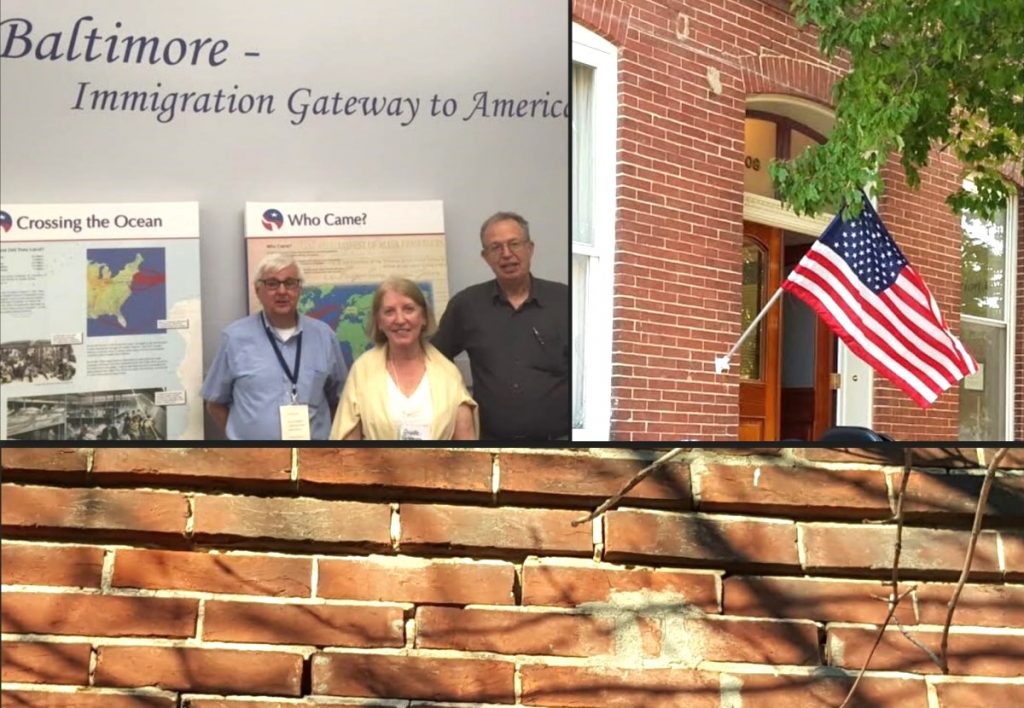Last October, Baltimore Heritage held our first preservation mini-grant “Pitch Party.” We put out a call for good ideas to help preserve Baltimore’s historic places and revitalize our historic neighborhoods and then threw a party to select nominations to receive small grants. Two projects received grants of $500 and another two received grants of $250.
One of our $500 grant award winners was the Baltimore Immigration Museum, located at the Immigrant House in the Locust Point neighborhood. The museum proposed repointing and repairing masonry above the main entry door to stop a leak that was slowly rotting away the woodwork on the door. This job was important in the short term to stop the leak and an important part of the museum’s long-term goal of restoring the building.
The Museum completed the work in early January and its directors are happy to report that the repairs worked: with the masonry shored up, the leak has stopped.
Special thanks to long-time member Ms. Brigid Goody for making the preservation mini-grant program possible, as well as everybody who participated in our first pitch party last fall. In addition to the Baltimore Immigration Museum, three other projects received mini-grant funding.
- The Herring Run Archaeology Project received $500 to purchase supplies for a spring archaeology project.
- Taylor’s Chapel in Mount Pleasant Park received $250 as part of a fundraising campaign to stabilize frescoes in this 1850s church that likely were painted by Constantino Brumidi, the fresco artist in the U.S. Capitol building.
- Lastly, the Market Center Merchant’s Association received $250 to bring Baltimore City public school kids who participate in the Maryland History Day competition to the Market Center Area for a tour of Civil Rights heritage sites.
Stay tuned as we provide updates on these other mini-grant awardees!


I’m happy that the leak was fixed. I can attest that water leaks are difficult to find and correct. Once the wood starts to rot you can’t fix it.